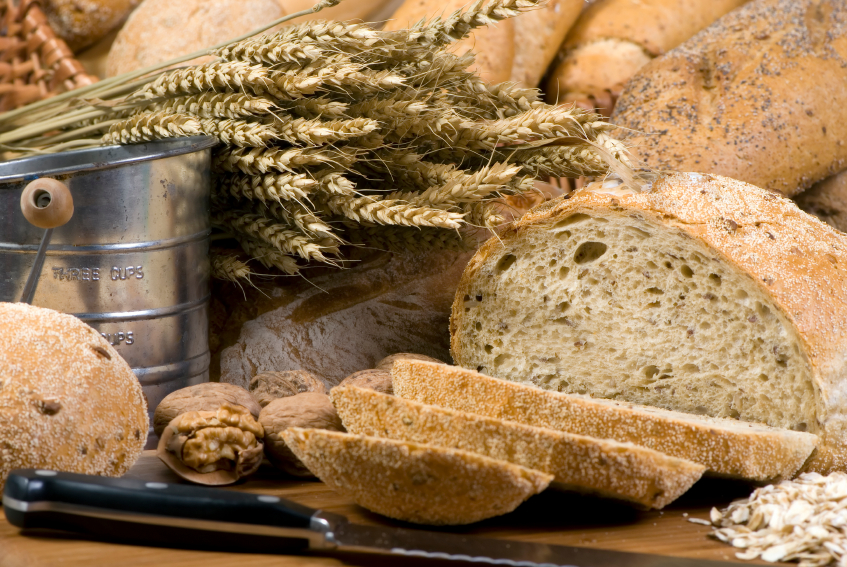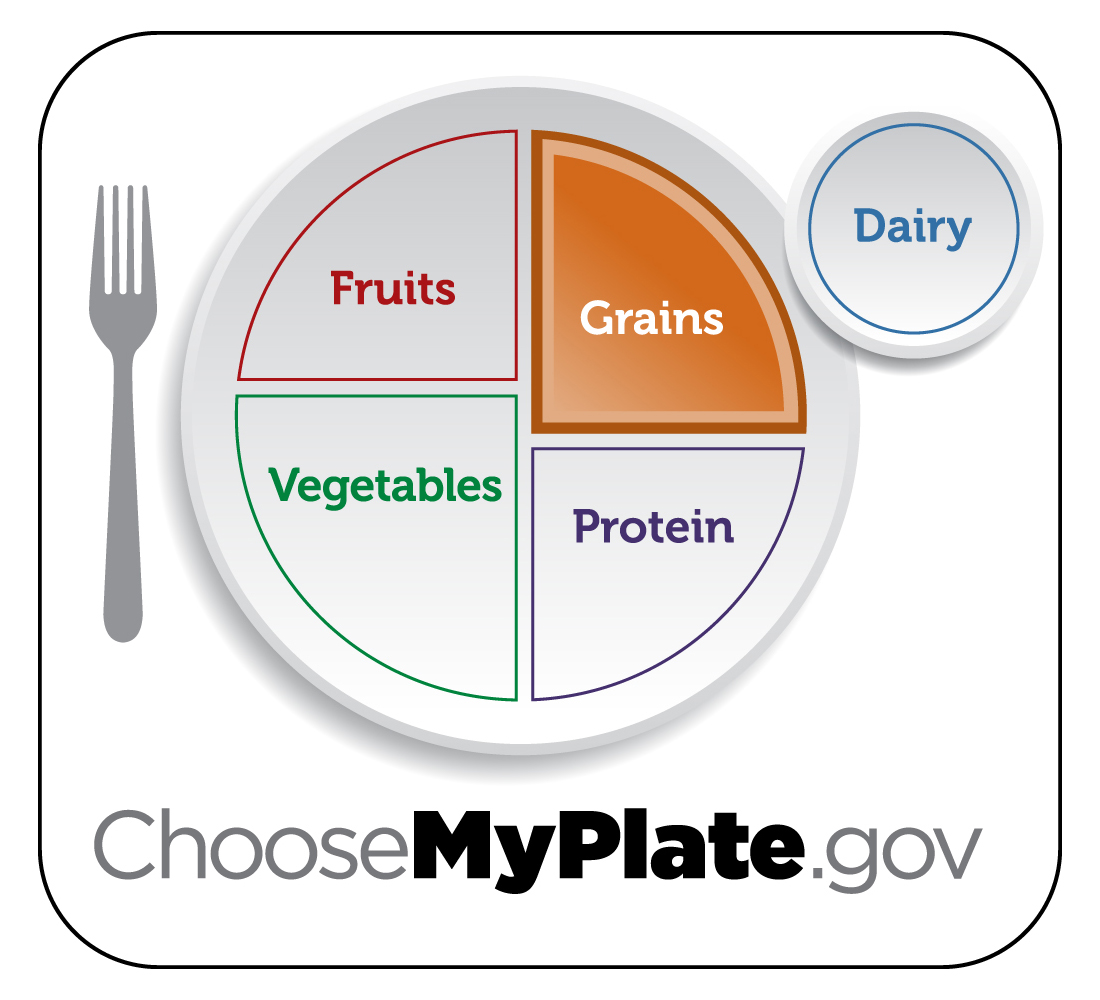
Whole grains are an important part of the diet that add fiber, vitamins and minerals to your daily intake. The recommended amount of grains in the Healthy U.S.-Style Eating Pattern at the 2,000-calorie level is 6 ounce-equivalents per day. Though many people know the dietary guideline recommendation to “make half your grains whole,” it is important to understand what whole grains are and why is it important to limit your intake of refined grains.
What are whole grains?
Whole grains are exactly what they sound like – the entire grain! Grains are broken up into three parts: the germ, the bran, and the endospore. The germ stores healthy fats and vitamins; the bran is the hard outer coating of the seed that provides fiber; and the endospore provides carbohydrates. When you see something is labeled as a “whole grain,” it means that all three parts of the grains are used.
Why choose whole grains?
Choose whole grains to get the most out of your carbohydrate for the same number of calories. Incorporating all three parts of the seed instead of just the endospore means you get fiber, healthy fat and vitamins in your carbohydrate. Fiber helps increase feelings of fullness for fewer calories, while vitamins and healthy fats help your body in many other ways. Those who consume all of their grains as whole grains should include some grains, such as some whole-grain ready-to-eat breakfast cereals, that have been fortified with folic acid. This is particularly important for pregnant women; folic acid fortification in the United States has been successful in reducing the incidence of neural tube defects during fetal development.
While whole grains boast all these nutritional benefits, refined grains (white bread, rice, etc.) use only the endosperm, meaning you miss out on all the other potential nutrients!
Although grain products such as cookies, cakes, and some snack foods should be limited, grains with some added sugars and saturated fats can fit within healthy eating patterns.
How can I know which grains are whole?
It is easy to consume whole grains such as rice, popcorn, quinoa, barley, millet, wild rice, and oats.
Navigating the grocery store for whole grains can be tricky. First and foremost, look for the whole grain stamp on the front of foods. If there is no whole grain stamp, look at the ingredients list on the back. Whole grains say:
- Whole grain [name of grain]
- Whole wheat
- Whole [other grain]
- Stoneground whole [grain]
- Brown rice
- Oats, oatmeal
- Wheatberries
However, these terms indicate that some parts of the grain may be missing and they are not necessarily whole grains:
- Wheat
- Semolina
- Durum wheat
- Organic flour
- Stoneground
- Multigrain
New regulations:

The National School Lunch Program (NSLP) has recently updated regulations regarding whole grains served in schools in accordance with the Healthy, Hunger Free Kids act of 2010. For lunch, beginning July 1, 2012 until June 30, 2014, half the grains served in schools over the course of the week must meet the whole grain rich criteria. Starting July 1, 2014, all grains served in schools must meet the whole grain rich criteria.
For the new free breakfast program in schools, the National School Lunch Program, half the grains each week served at breakfast must meet the whole grain rich criteria. Beginning July 1, 2014, all the grains served weekly must meet the whole grain rich criteria.
Foods that meet the whole grain rich criteria must contain 100% whole grain or contain a blend of whole grain flour and enriched flour. Whole grain flour must comprise at least 50% of the blend if the blend is to meet the whole grain rich criteria.
Contributors
Sarah Roger and Tisa Hill, Cornell University
For More Information
Why Chose Whole Grain for Your Kids?
Identifying Whole Grain Products Whole Grain Council
